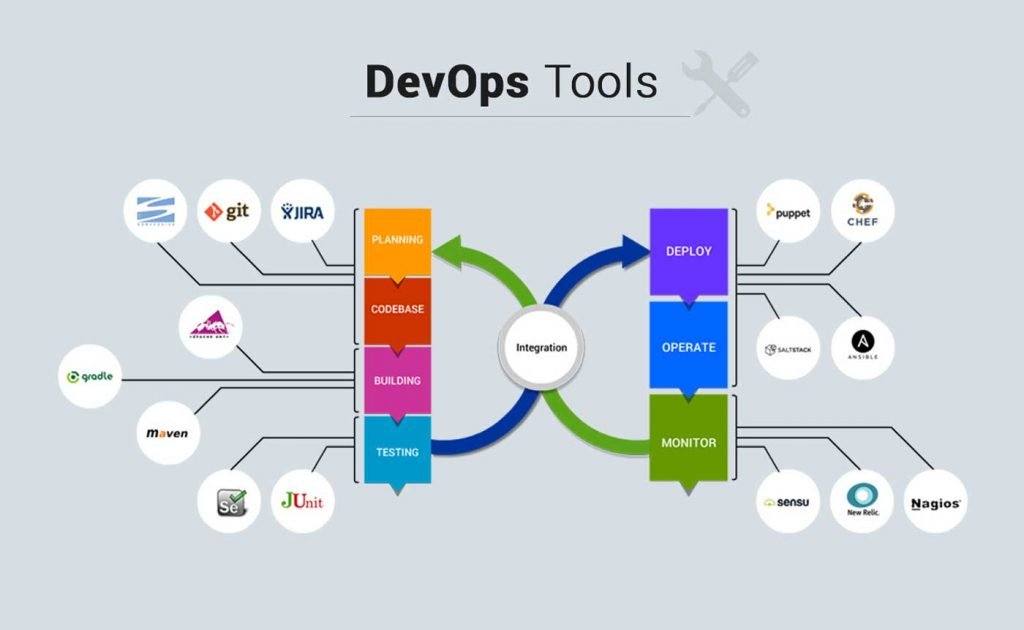Choosing the right DevOps tools for your tech stack can help the entire company streamline the development process. With DevOps becoming an integral part of the software development scheme, keeping it on the backburner is out of the question.
Over the past few years, DevOps has evolved from being a tool into a full-scale framework. Based on Agile and Kanban philosophy this incremental and collaborative approach to software development has turned the world of developers upside down. In a good way.
Let’s take a closer look at the most popular DevOps tool to add to your arsenal.
1. Kubernetes
With the popularity of container-based software on the rise, Kubernetes is taking a stand. According to Statista’s survey, one-third of organizations were already using container technologies in 2020. The numbers have been rising through 2021 as well.
Kubernetes automates deployment, scaling, and maintenance of container groups in production, simplifying the development
Using the platform may seem complex at first. However, as you gain experience, it can be easy to see how helpful this tool can be. You can also discover theKubernetes platform for DevOps for cloud-native app management.
2. Docker
Docker is a free open-source platform, which can build and run apps through lightweight containers. With containers playing a big role in many Agile development processes, such a platform can be a big help for the DevOps methodology. The components of each Docker are:
- Dockefile – text file with instructions to build Docker images, including file locations, network posts, languages, etc.
- Docker image – portable, executable, and read-only file with instructions for container creation as well as specs for which components the container will be running.
- Docker run utility – the command that launches the container.
- Docker Hub – a repository for container images where they can be shared and managed.
- Docker engine – creates and runs containers
- Docker compose – command line tool that defines and runs multi-container apps.
- Docket desktop – the app that offers a user-friendly way of building and sharing containerized apps and micro-services.
Docker containers give DevOps teams a way to build apps that are easier to create, maintain, and share than with other methods.
3. Ansible
This is another open-source tool, which is famous for its simplicity. Ansible is operating on a master machine and uses SSH for node connection. You can run Ansible from any computer that has Python 2 or Python 3 installed.
This tool simplifies configurations (or playbook) management with YAML (Yet Another Markup Langauge). You can also automate cross-platform tasks and use the tool’s pull mode to work with repositories and run commands from certain files.
The downsides of Ansible is the lack of Windows support and issues with mass synchronization across numerous servers.
4. Jenkins
Jenkins is a highly useful open-source service, which acts as a continuous integration tool. This particular service makes it easier for the DevOps team to integrate new components into the software. The tool uses integration plugins for achieving this goal.
Jenkins looks for new pull requests, merges fresh work branches into the main code, runs automated test suits, seeds fresh test data, reports errors, and more.
Developers take advantage of Jenkins Pipeline to integrate automated expressions of the process for continuous integration.
5. GitHub
GitHub is a highly popular tool among DevOps teams. This is a source code management service with a variety of benefits. The advantages of GitHub include low learning curve UI, smart features like restoration of mistakenly deleted repositories, prevention of product deletion, and security. GitHub is highly reliable and rarely has downtime.
Developers love GitHub for its formidable community, which is great for open-source projects. Since Microsoft owns the service, integration is available for Azure DevOps and Microsoft tools.
The Takeaway
Each one of these tools can be highly effective for your development projects. When you are choosing the best option for your team, the process may seem time-consuming. Think about every minute of the selection as a major investment into the future quality of your product.
Take the time to consider free open-source options, especially if you are on a limited budget.

